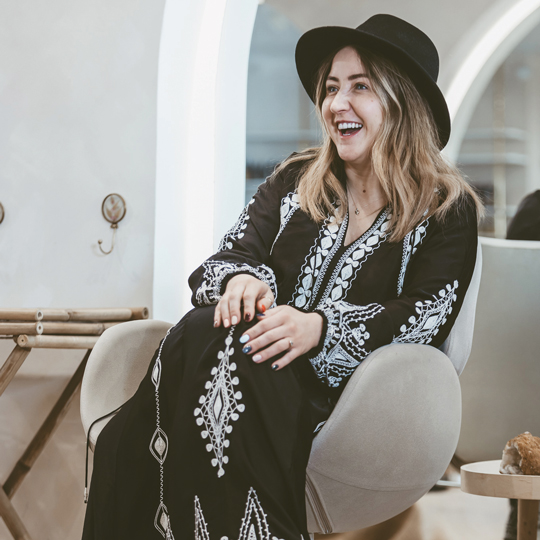Is Wellwashing Taking Over Our Industry? Why Creating A Culture Of Wellness Goes Beyond A Morning Meditation
Wellbeing has become a buzzword in the industry, but when does it do more harm than good? Find out how to put staff wellbeing front and centre correctly.

worst of all is that it’s happening in our industry.
The Pandemic shifted many aspects of the cultural zeitgeist, a work/life balance with a greater emphasis on mindful, positive habits being one key area. It allowed businesses to reflect on their practices and check in with the team properly, beyond a passing ‘how are you?’ in the break room between clients. The downside? As attention turned to the topic of wellness, it became a trend and everyone wanted a piece of the pie, but not necessarily for the right reasons.

Danielle’s salon, Wildflower, is known across the industry for being an inclusive, welcoming space where both the salon team and their clients can grow and thrive; after all, they did win Most Wanted’s Best Client Experience award in 2022. But Danielle is the first to admit that creating a culture of wellness cannot be dictated – it cannot be a one-style-fits-all all approach, otherwise, you will fall at the first hurdle.
More often, wellwashing comes from a place of feeling the need to ‘do something’, as opposed to a genuine desire to prioritise staff wellbeing beyond the surface level.
“When businesses do this, they can end up just checking the wellbeing box rather than investing in a strategy that has an impact far beyond improving and protecting the wellbeing of employees.,” says lifestyle and holistic coach, Sonia Magnier. “They are missing out on the real benefits of putting employee wellbeing front and centre.”
Conversely, properly Investing in your team’s wellbeing can lead to improved productivity, lower staff turnover and absenteeism, and a more positive company culture. Sonia has seen this first-hand with the clients she is working with and truly believes it makes a difference.

Sonia Magnier
To genuinely nurture a wellbeing-focused culture in your organisation, Sonia suggests considering these strategies:
It starts at the top
“Leadership needs to walk the talk and show a real commitment to their own wellbeing as well as employee wellbeing. Your team should see that your actions speak louder than words! A half-day wellbeing workshop is a great way to kick-start a wellbeing programme.”
Empower your employees with the tools they need
“Offer training on mental health awareness, stress management, and resilience. Give them the skills to tackle the ups and downs of the modern working world.”
“Listen to what employees have to say and take their feedback on board. Hold leadership accountable for keeping the wellbeing communication going.”
It’s also valuable to remember that wellness is a personal journey, so each person involved in the brand or salon must have the flexibility to work on their wellness. “You can’t enforce yoga or meditation classes if the individual isn’t in the right head space,” says Danielle. “As a business, our HR offering includes six therapy sessions that can be taken at any time. But it’s not my place to comment when a team member needs to make that first appointment. All I can do is make sure they are aware of the opportunity and be there when they need it.”
To genuinely prioritise your employees’ wellbeing, it’s important to commit to long-term initiatives that prove that you care. Not only will you dodge the dangers of well-washing, but you’ll also create a happier, healthier, and more productive workforce.
Related
Tim Binnington Turned Down Investment In His Brush Business From Dragons Den – And Here’s Why
The man who helped build the Headmasters empire is striking out once again.
Nicola Coughlan is Talk of the ’Ton
Session stylist Halley Brisker lifts the lid on working with the Bridgerton star as its third series hits Netflix.
Is AI The Answer To Creating A Booming Business?
How two salon owners and a self-employed hair pro have used AI to level up their work.










